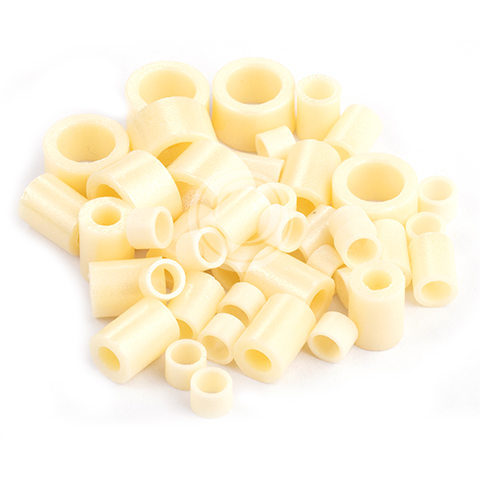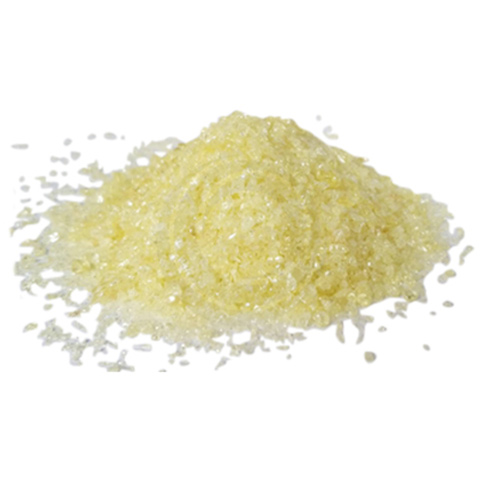
HOMETECH☰



This product is used for sealing the end of heating element. High coefficient of expansion, low softening temperature, high insulation, lead-free
| Basic properties of sealing glass before sealing | ||||
| Glass softening temperature | Glass transition temperature | Average coefficient of thermal expansion ( RT-300 °C) | End operating temperature | Resistivity (25 °C ) |
| 430~440 °C | 400~410 °C | 9.3±0.5×10-6 /°C | ≤350 °C | 109 Ω·m |
| Leakage current detection (detection voltage 1000 V) | Insulation resistance detection (detection voltage 1000 V) | |||
| Temperature(°C) | Leakage current (mA) | Temperature(°C) | Insulation resistance( MΩ ) | Remark |
| 100 | 0 | 100 | 2×106 | Testing is performed on the insulating material itself,after packing according to the company's internal standards, which may affect the results. |
| 250 | 0.007 | 250 | 1.5×103 | |
| 300 | 0.016 | 300 | 55 | |
| 350 | 0.043 | 350 | 6 | |
| RoHS Testing | ||||
| substance | Detection value | substance | Detection value | Remark |
| Pb | not detected | Hg | not detected | Testing agency SGS, other macromolecular substances are not detected。 |
| Cr6+ | not detected | Cd | not detected | |
Appropriate sizes of prefabricated glass parts are put into the end of the heating element, and then heated to a certain temperature by heating equipment (flame spray robbery, high-frequency heating machine, box furnace). When the glass begins to soften and flow to fill the gap, left it to cool to room temperature so that the glass solidifies, then the sealing process is complete.
The figure is a recommended temperature for box-type electric furnace sealing. Please pay attention to the cooling process after the sealing is completed.
If you are using a high-frequency heating machine or a flame spray gun etc., please heat until it melts and then cool down slowly (quick cooling is not suitable).
How to choose Good heating equipment for glass sealing?
| High frequency heating (Recommended) | Pros: Heat is applied to only part of the electric heating element to protect the rest of the tube from heat damage under high temperatures. Easy to use, can be moved. (Temperature rise curve can be set for certain models) |
| Cons: Heating can only be done with a single individually. | |
| Chamber Heating | Pros: Heating temperature can be adjusted so that there is a cooling process after the glass is melted to avoid the phenomenon of sudden cooling, which leads to cracks in the glass. |
| Cons: The whole electric heating element is heated, causing high energy consumption, a long time is needed (but considering the mass volume versus time, it is not considered time-consuming), and may cause damage to the tube and the Magnesium Oxide Powder on the electric heating element. For odd shape tubes, they cannot be put into the box furnace. | |
| Flame Gun | Pros: cheap and easy to use |
| Cons: Unsafe to use a flame, and it is not easy to control the temperature. In addition, it is forbidden to heat the glass directly. Only the location below the glass ring (slightly below the wall of the electric heating element) can be heated. The gas of the flame gun may also react with the glass, thus changing the nature of the glass. |
Normal operating temperature of up to 650 degrees. If used for electric heat tube sealing, the temperature of the electric heat tube port should be stable at 400 degrees and below. At this temperature, the insulation performance will be excellent. The electrical resistance begins to decline once the temperature exceeds 450 degrees. At this time, the wall temperature of the electric heat tube may have reached 600-800 degrees.
After the electric heating element has been glass sealed, it can be magnified under a microscope for observation. Around the mouth of the tube, there will be a uniform distribution of substances with glass luster, indicating that the sealing effect is good, with high surface gloss, and no obvious cracks found.